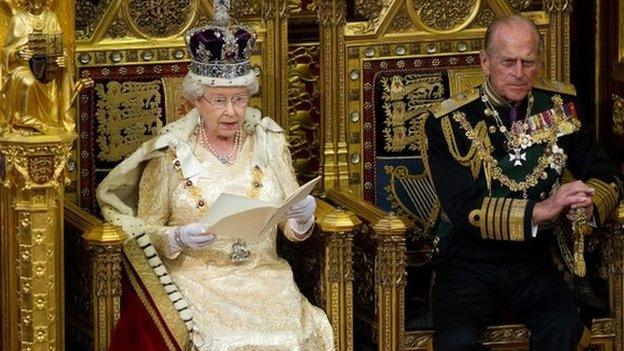First Queen's Speeches: How new governments used their power
- Published
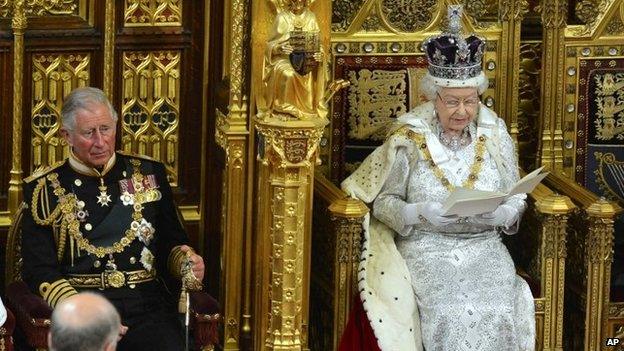
All eyes will be on the Palace of Westminster on Wednesday as the Queen reads out the legislative plans of David Cameron's new government.
It will be a chance for the first all-Conservative government for almost 20 years to set out its stall for the next five years. Here's how some other new governments have used their Queen's (and King's) speeches.

1945

Clement Attlee and his wife Violet after Labour's general election victory in 1945
The 1945 election marked a watershed in British history. The Conservative wartime leader, Sir Winston Churchill, was defeated by Clement Attlee's Labour Party.
The state opening of Parliament, on 15 August 1945, came at the end of World War Two, on Victory in Japan Day.
King George VI's speech, external was delivered in the House of Lords, which had been occupied by MPs since the Commons chamber was destroyed by bombs.
"Echoes of great events in British history mingled with the rejoicings of victory when the House of Commons assembled this morning in St Stephen's Hall for the state opening of Parliament," the Times newspaper reported, noting that Churchill was cheered as he took his seat.
In quotes
"The continuing shortages in the supply of many necessaries, especially houses, food, clothing and fuel, will call for the same spirit of tolerance and understanding which the nation has displayed during the past six years of war."
Key measures
MPs were told money would be needed "not, happily, for the continuance of the war, but for expenditure on reconstruction and other essential services"
As well as post-war reconstruction, the government would also have to complete the social reforms started by the previous government, the Times said, predicting most interest in the King's speech would be "in matters about which there is acute disagreement among the parties".
The government planned to press ahead with nationalisation, starting with the Bank of England and the coal industry.
An "urgent and vital task" would be to "increase by all practicable means the number of homes available both in town and country"
What happened next
Key services and industries were nationalised, and Attlee's government ushered in the welfare state and the National Health Service. India was granted independence.
The Attlee government changed the face of British society, creating a new social consensus that was to remain largely unchanged until 1979, but its majority was slashed in 1950 amid public frustration at continued austerity and rationing, and the following year saw Churchill return to power with a comfortable majority.
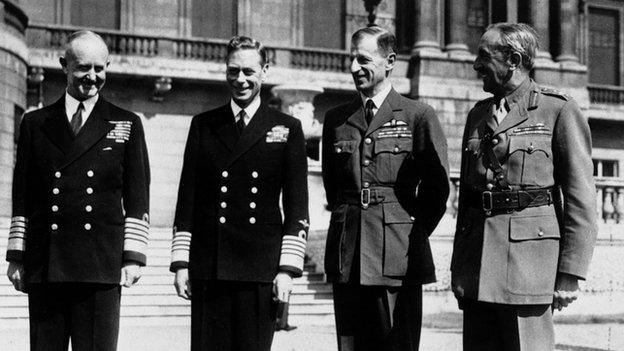
After the state opening, King George VI received ministers and chiefs of staff at Buckingham Palace

1979
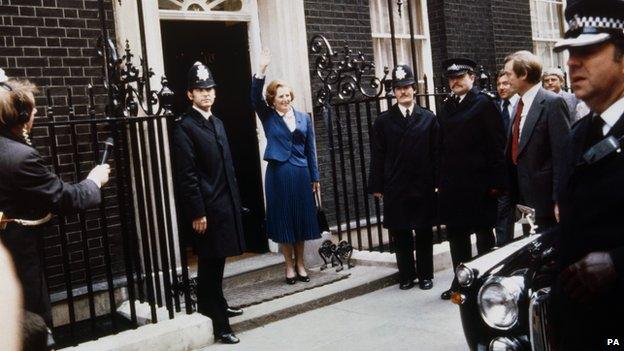
Margaret Thatcher became the UK's first female prime minister, ousting Jim Callaghan's Labour with a 43-seat majority. During the campaign she had promised to cut taxes, reduce public spending and curb the power of trade unions.
In quotes
"My government intend to achieve a fair balance between the rights and duties of the trade union movement."
Key measures
The flagship right, external for local authority tenants to buy their homes
On the economy, "reducing the burden" of tax and "restricting the claims of the public sector on the nation's resources"
Trade union reforms including amending the law on picketing and the closed shop
A reduction in "the extent of nationalised and state ownership"
Increased competition by "providing offers of sale, including opportunities for employees to participate where appropriate"
What happened next
"Right to buy" proved extremely popular, with about 1.5m homes purchased under the rules by 2003. It was seen as a major vote winner for the Conservatives in subsequent elections, and in 1985 Labour dropped its official opposition to the scheme.
Critics said it contributed to a reduction in the number of available council homes.
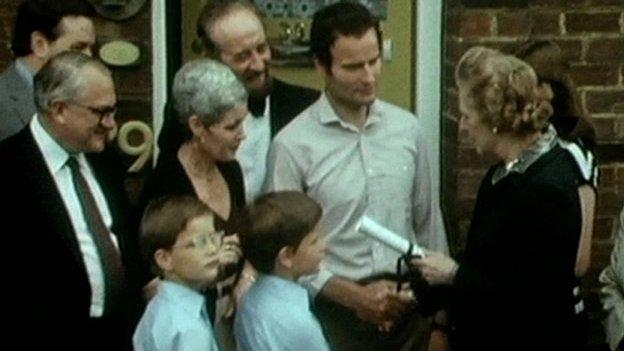
Margaret Thatcher hands over deeds to one of the first council houses bought under the right To buy scheme
Meanwhile, Mrs Thatcher's battles with trade unions became one of the defining features of her premiership. Ultimately their power was reduced and membership plummeted.
Many of the services nationalised under the Attlee government were privatised.
Public spending was slashed, and documents released in 2009, external revealed even some Conservative ministers were alarmed at the scale of cuts planned in 1979.
Mrs Thatcher was prime minister until 1990, winning three general elections. The Conservatives won one further election and remained in power until 1997.
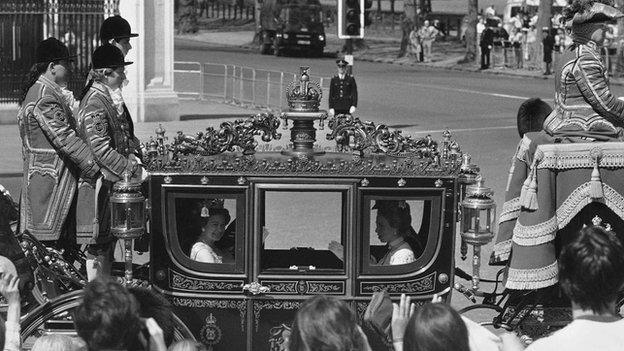
The Queen and Princess Anne leave Buckingham Palace for the state opening of the new Parliament

1997
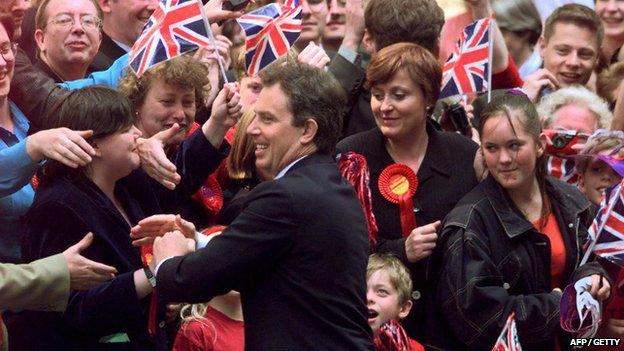
On 1 May 1997, Labour's 18 years in opposition came to an end. Tony Blair's New Labour won a 179-seat majority - the biggest in its history - on a manifesto which not only promised no income tax rises, but also a pledge to stick to Conservative spending plans.
In quotes
"The central economic objectives of my government are high and stable levels of economic growth and employment, to be achieved by ensuring opportunity for all."
Key measures
Handed responsibility for setting interest rates to the Bank of England
A ban on tobacco advertising
A Freedom of Information Bill to increase transparency
Referendums on a Scottish Parliament and Welsh Assembly
What happened next
"These are only the first steps on a long journey," was the Guardian, external's verdict, adding that "Labour begins that journey sustained by enormous national delight".
Business leaders broadly welcomed the decision to free the Bank of England, which had divided the Conservatives. The Bank's monetary policy committee continues to set interest rates.
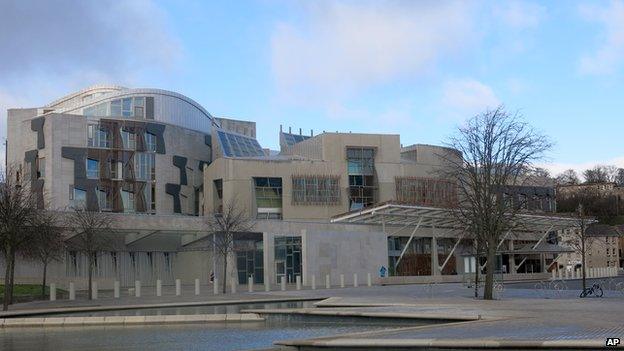
Tony Blair's first Queen's Speech promised a referendum on a Scottish Parliament
Labour got into hot water with its tobacco advertising ban, as it announced an exemption for Formula One and then had to return a £1 million donation from F1 chief Bernie Ecclestone.
The Freedom of Information Act remains in place - although Mr Blair subsequently described it as one the biggest regrets of his time in office. The Scottish Parliament and Welsh Assembly were established after referendums.
Labour went on to win two more general elections, with the 2010 election bringing an end to its 13-year tenure.

2010
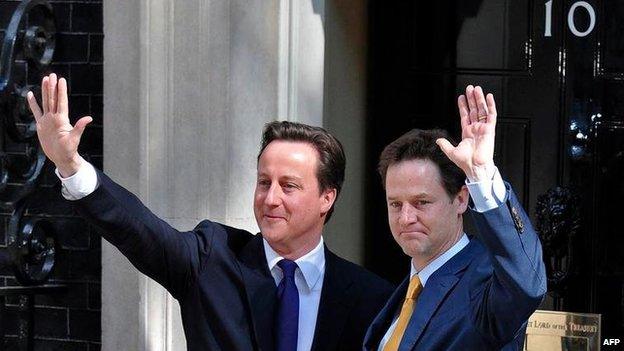
David Cameron and Nick Clegg formed a coalition government in 2010
After the general election left no single party in overall control of Parliament, the Conservatives and Liberal Democrats came together to form Britain's first coalition government in 70 years. The result was the coalition agreement, external, which would form the backbone of the government's legislative programme for the next five years.
In quotes
"Action will be taken to accelerate the reduction of the structural budget deficit."
Key measures
Welfare reform including a new universal credit
A referendum to approve any future treaties handing powers to the European Union
The scrapping of ID cards
Reform of the NHS including scrapping primary care trusts
The creation of a new independent Office for Budgetary Responsibility
A referendum on a new voting system
Construction of a new high speed rail line
What happened next
Contrary to some predictions, the two parties remained together throughout the parliament.
Civil liberties measures like scrapping ID cards proved more straightforward than issues where the two parties were on opposite sides of the debate, like the proposed move to the Alternative Vote system, which was resoundingly rejected in a referendum.

The voting system referendum promised in the Queen's Speech resulted in a No vote
The government went on to change the structure of the NHS - despite vocal opposition from Labour - and set out details of the HS2 rail line, with construction due to start in 2017.
After sticking together for five years, the two parties experienced differing fortunes at the 2015 election - the Conservatives secured an unexpected majority while the Lib Dems lost all but eight of their MPs.
- Published17 July 2024
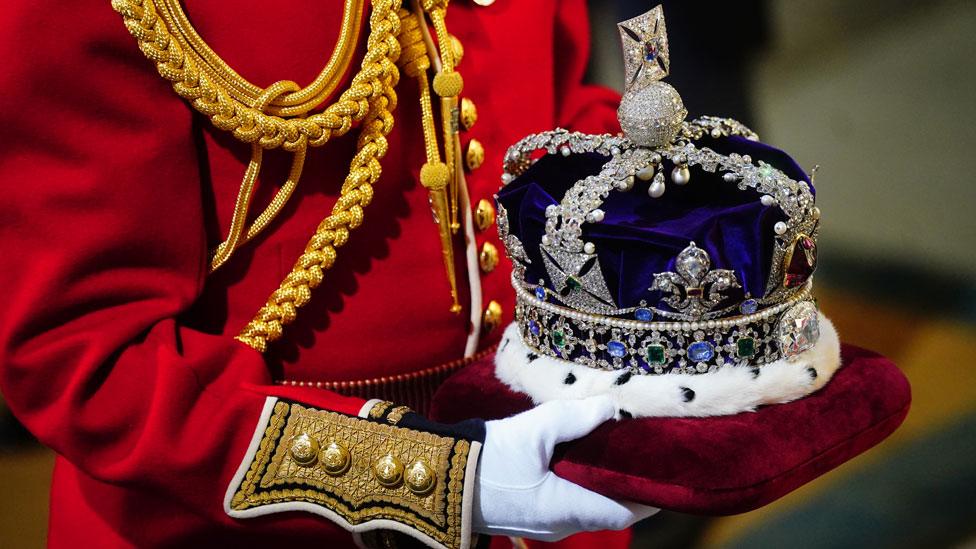
- Published26 May 2015
